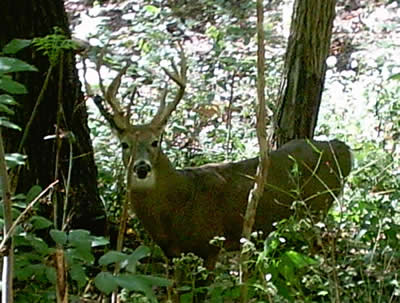
Each landowner or property manager must recognize the habitat needs of white-tailed deer on a continual basis and direct management towards meeting those needs. Since white-tailed deer have a relatively small home range of about ½ to 1 mile in radius over an annual basis, all of their needs for growth, reproduction, and cover must be met within this unit. Deer management is about food management–as in habitat.
Whitetail will seldom move from within their home range to meet their needs, even though better conditions may exists in the surrounding area! Deer are very versatile in their feeding habits and will eat a wide variety of items, including fruits, browse, forbs, agricultural crops, and even small amounts of grass. Deer “perform” best in habitat where a great variety of preferred food items are present.
Diversity within a habitat will result in some preferred food items being available at all times during the year. With that said, a shortage of palatable foods during any one season of the year will limit deer numbers during other seasons. The limiting factor for any one season is THE limiting factor for an entire year!
Even though white-tailed deer are versatile in feeding habits, they also are very selective. Just because you may see “a lot of grass out there” does not mean there is a suitable amount of deer forage present. Everything green is not deer food. As a matter of fact, usually less than one-third of the plants in an area can be classified as “good” deer foods. As a result, management must be directed toward preserving species of trees, shrubs, and vines which are preferred as deer browse.
Browse, as important as it may be, is not a cure all for deer diets. I will discuss this topic more later this week.